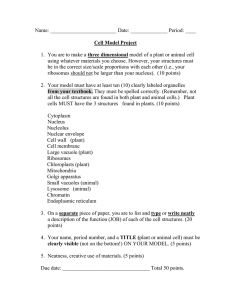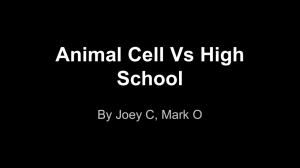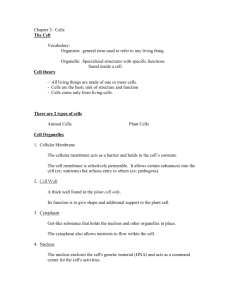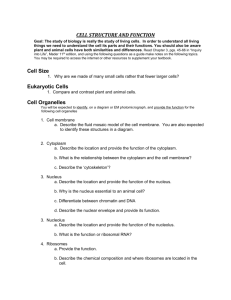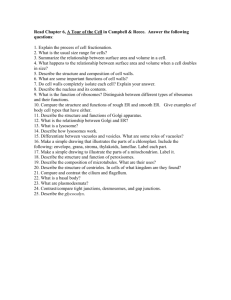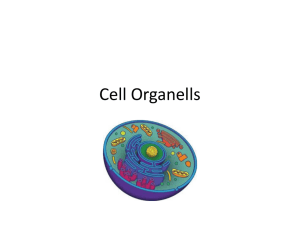1.1 Compare and contrast plant and animal cells
advertisement
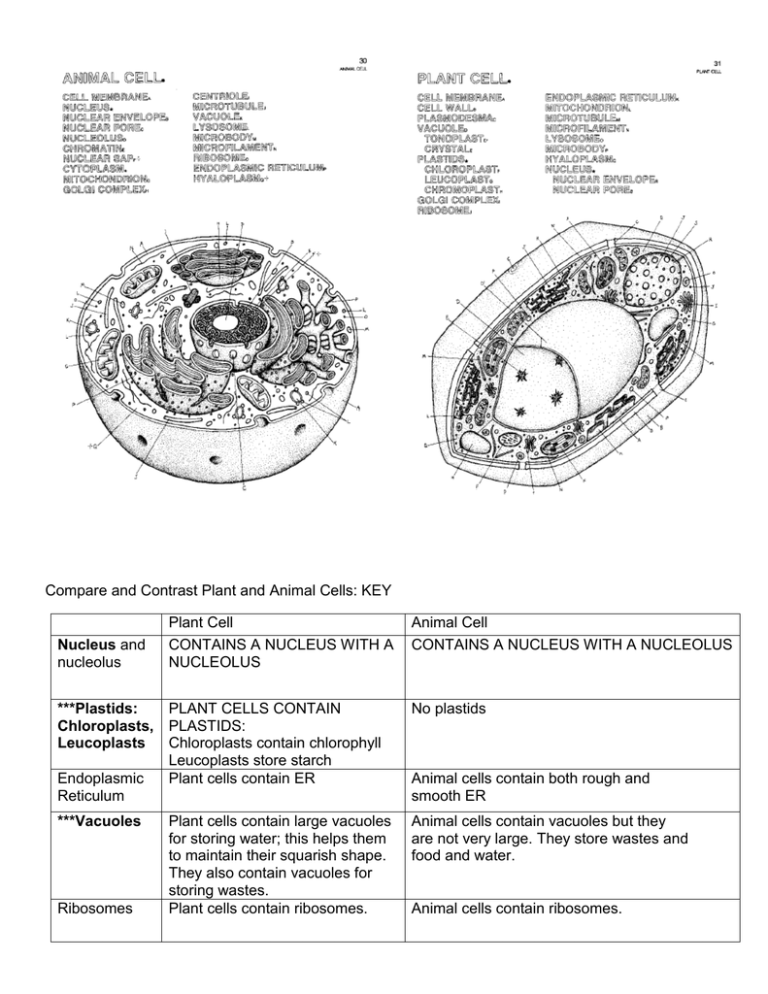
Compare and Contrast Plant and Animal Cells: KEY Nucleus and nucleolus Plant Cell CONTAINS A NUCLEUS WITH A NUCLEOLUS Animal Cell CONTAINS A NUCLEUS WITH A NUCLEOLUS ***Plastids: PLANT CELLS CONTAIN Chloroplasts, PLASTIDS: Leucoplasts Chloroplasts contain chlorophyll Leucoplasts store starch Endoplasmic Plant cells contain ER Reticulum No plastids ***Vacuoles Animal cells contain vacuoles but they are not very large. They store wastes and food and water. Ribosomes Plant cells contain large vacuoles for storing water; this helps them to maintain their squarish shape. They also contain vacuoles for storing wastes. Plant cells contain ribosomes. Animal cells contain both rough and smooth ER Animal cells contain ribosomes. Cell Membrane Animal cells contain a cell membrane composed of two layers of lipids. Mitochondria Plant cells contain a cell membrane composed of two layers of lipids that attaches to the cell wall. Plant cells have a cell wall made of cellulose, a fibrous carbohydrate. This contributes to the plant cell’s squarish shape. Plant cells contain mitochondria. Golgi Body Plant cells have golgi bodies Animal cells have golgi bodies ****Cell Wall Animal cells do not have a cell wall. Animal cells contain mitochondria. ****Centrioles Plant cells do not have these; rather they form a cell plate between dividing cells. Animal cells use centrioles to organize spindle fibers during cell division ***Cell Shape Irregular, spherical rectangular
